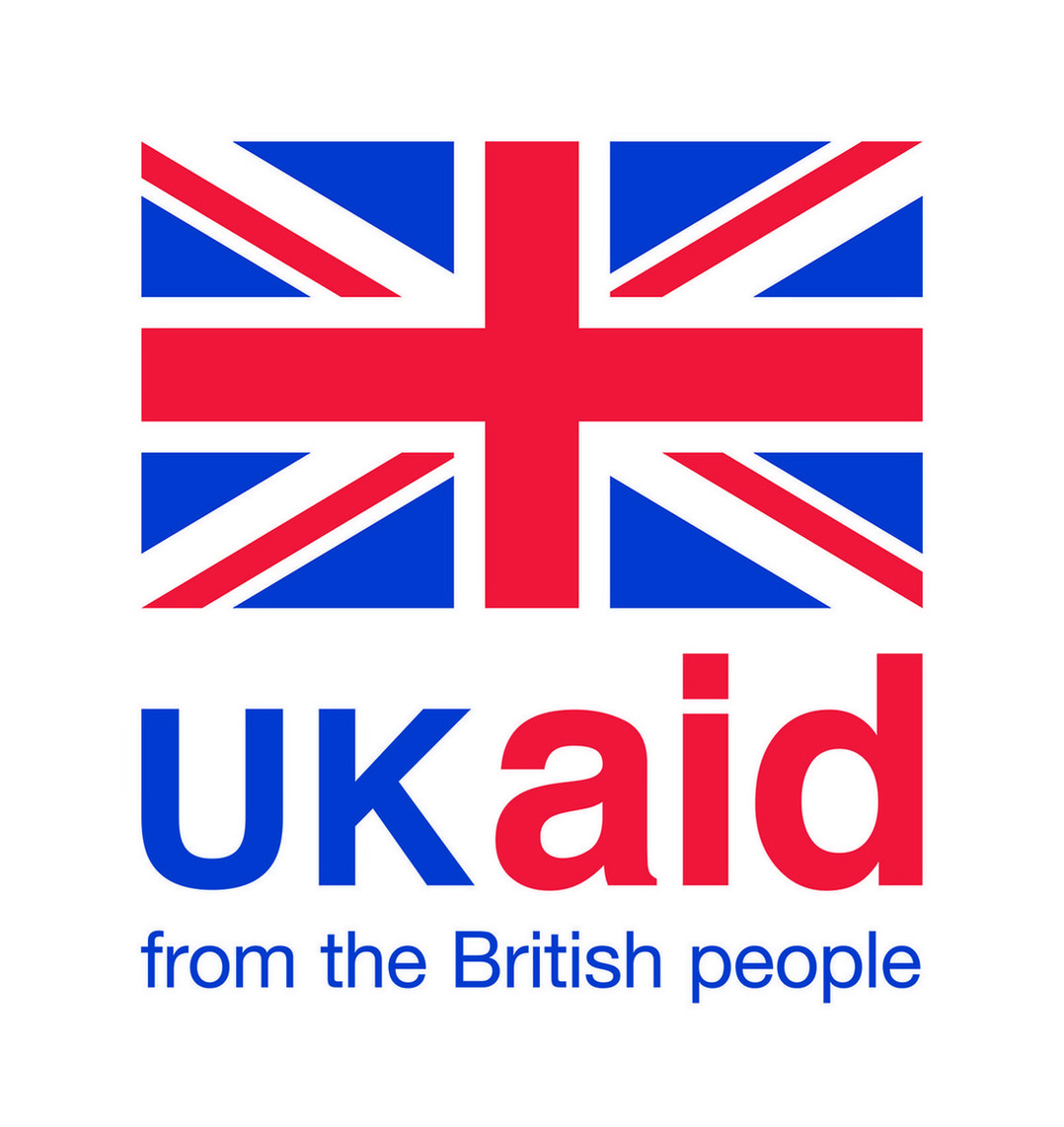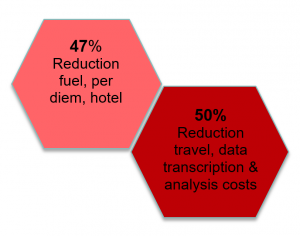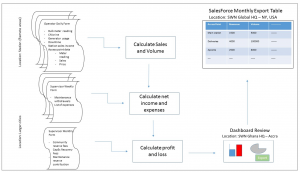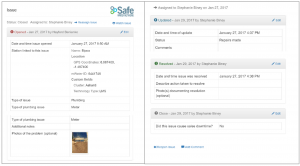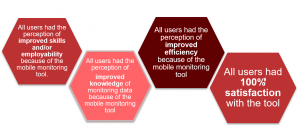This blog was written by Caroline Sheldon, former Market Engagement Manager for Mobile for Development (M4D) Utilities.
Lessons from the Safe Water Network Seed Grant
In 2013 we launched the M4D Utilities Innovation Fund to trial and scale the use of mobile to improve or increase access to energy, water and sanitation services. To date we have awarded Seed and Market Validation grants to 34 organisations in 21 countries. We are publishing a series of blogs and case studies containing the final learnings from the 21 grants in the second phase of our Innovation Fund. Our objective is to develop an evidence-base across mobile-enabled utility solutions that can inform ecosystem players and accelerate the growth of the sector.

Asonomaso Water Station, near Kumasi, Ghana.
Safe Water Network (SWN) received a grant from the GSMA Mobile for Development Utilities Innovation Fund in September 2015, to trial the use of mobile data collection to improve both the monitoring of water stations and response to maintenance issues for better water service delivery to small towns and peri-urban communities in Ghana.
SWN builds and owns water treatment and distribution stations and has worked alongside communities in Ghana since 2009 to provide the training tools and support to ensure the stations can be locally managed and operated. Water is sourced and treated at the station and customers pay a nominal amount to ensure financial sustainability.
Initially, collecting water station data on meter readings, sales, and water quality among other metrics was a tedious task that included manual handwriting of data by water station operators, which would then be compiled and managed manually (in Excel) by the Field Service Entity (FSE) team as well as the SWN staff office in Accra. This process was used for 37 water stations clustered across Ghana, which caused inefficiencies with a lot of back-and-forth for field and central staff, inaccurate data, and subsequently delayed data submissions to the global office.
Through the grant support, SWN moved from their paper-based reporting system to a mobile collection system via GSM-enabled tablets in collaboration with mWater, an organisation that creates world-changing technologies for water, sanitation and health services. mWater developed an app that enabled the real-time collection of data from the water stations to be easily received and analysed by FSE and head office staff. Additionally, SWN and mWater developed an issue reporting system to track breakdowns and monitor the entire maintenance and repair supply chain to increase efficiencies and minimise downtime.
Through the grant support, SWN moved from their paper-based reporting system to a mobile collection system via GSM-enabled tablets in collaboration with mWater, an organisation that creates world-changing technologies for water, sanitation and health services. mWater developed an app that enabled the real-time collection of data from the water stations to be easily received and analysed by FSE and head office staff. Additionally, SWN and mWater developed an issue reporting system to track breakdowns and monitor the entire maintenance and repair supply chain to increase efficiencies and minimise downtime.
The key recommendations drawn from this grant are found at the end of this blog.
Results
Mobile monitoring leads to 50 per cent reductions in station monitoring costs
The mobile monitoring system did reduce operating costs due to lower travel costs to monitor station metrics and investigate breakages/issues, a decrease in staff time for station monitoring activities and lower stationary and printing costs.
This reduction in costs was seen even with the additional trainings and technical support visits that were necessary during the implementation of the project. These costs are projected to reduce as the operators increase their comfort levels with the app and follow the data input processes.
Figure 1: Example of a daily operator form
Figure 2: Example of data flows
Additionally, this project tested whether or not the mobile monitoring would bring additional costs that stations could not bear. It was found that even with the additional costs of GSM data for the tablets, stations are still showing healthy gross margins as shown in Figure 3.
Costs of the application are low and are funded by the water revenues of each station and further ongoing training, the cost of which is expected to gradually decrease, will be funded through management fees to ensure the full adoption and ongoing application of the system. Mobile monitoring has enhanced SWN’s long-term viability with reduced station management costs and increased operational efficiencies, which should eventually lead to an increase in gross margin as the effects of mobile monitoring are felt across a longer period of time.
The impact of these results is that FSE staff will be able to manage an increased number of stations (from 4-5 up to 7-10) with the same level of effort assisting SWN’s ability to continue to scale by building more water stations.
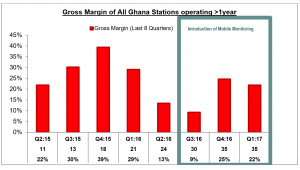 Figure 3: Gross margin of all Ghana stations operating for more than 1 year
Figure 3: Gross margin of all Ghana stations operating for more than 1 year
Real time issue reporting leads to decrease in downtime
Real time data has improved maintenance and repair through the Issues Reporting Form (see Figure 4 below). Mobile monitoring has facilitated increased efficiencies whereby by real-time reporting of breakdowns and remote diagnostics ensures expedited resolution processes. Stations have exceeded their downtime targets and on average have decreased downtime per month from 12 to eight hours. The system also provides managers the opportunity to review the entire issues reporting and resolutions processes and make better decisions and deal with ‘bottleneck’ activities within the chain.
Figure 4: Issue reporting form
Future app development will Increase data on customer demographics
The current mobile monitoring tool only focuses on capturing financial and operational metrics but future development is underway to incorporate tracking of consumer parameters, which builds upon the current system. This additional functionality will allow SWN to measure how volume purchased is effected by customer demographics, seasonality and how customer activation campaigns effect household participation.
Other major learnings
Strong partnerships are critical to successful implementation
Through an intensive discovery process, SWN found that the existing data-capture solutions on the market were not appropriate to collect the operational and financial information with the granularity & specificity that was required. A solution that incorporated the collection of water station management data (pH, chlorine levels etc.) with the financial data of the station (revenue collected, amount of water sold etc.) was needed. As a result, SWN chose mWater as a partner based on their experience in similar projects and flexibility of their platform. A strong partnership with mWater led to a thorough understanding of data flows and use cases for app, which enabled mWater to design a bespoke system. The resulting mobile monitoring platform was developed by mWater and has added significant value to both SWN as well as the wider water sector due to mWater’s open source practices.
Increase in responsibilities and tablet usage led to improved morale
Through an intensive discovery process, The introduction of the mobile monitoring app via tablets has led to improved morale among staff, especially the water station operators. The tablet and mobile monitoring has led to an increased level of responsibility for the operators and the trainings highlighted the operators’ value to SWN and reinforced a sense of pride into their work.
An endline survey of a random selection of 10 users (SWN field staff and station operators) revealed the following:
Challenge: Trainings take time
As mentioned, before SWN implemented the mobile solution, a paper and Excel based monitoring process was already in place. Full implementation of the mobile monitoring took more time than expected and staff were burdened during the beta testing with double work of using the Excel system (as a backup) while trialling the new mobile reporting system. Station operators often needed more trainings to better engage and incentivise them to use the app as expected. On occasion even one-on-one trainings were executed for operators that needed more hands-on training. These trainings resulted in improved frequency of data collection and upload (daily by operators) throughout the rollout phase of the project.
Projected learning & future MNO partnerships
Working in partnership with Vodafone Ghana, upon introduction from the GSMA, SWN is piloting mobile money integration into water sales to improve financial viability in safe water services delivery. This is expected to reduce transaction costs through electronic bulk payments made by SWN staff. Additionally, the SWN team is currently quantifying the impact of 100 mobile money enabled pre-paid smart meters for household connections. This pilot will provide benefits such as reducing station operational expenditures (time & travel costs), increasing station revenues and improving customer service. This pre-paid pilot is funded by a grant from the World Bank’s CGAP programme, which was a relationship, developed through a GSMA convening.
SWN is continuing to work with mWater to further digitise their operations across their headquarters in Ghana and New York. This will ensure efficient aggregation of filtered data to authorised users to serve the management and research needs of SWN.
Recommendations
For Mobile Network Operators
Have conversations with service providers even if there is no immediate partnership plan. Safe Water Network used both MTN and Vodafone SIMs in the tablets for this grant based on the local coverage near the water stations. While this implementation did not require a new buisness partnership with an MNO, these conversations led to other projects and areas that could be developed, specifically the use of mobile money. Safe Water Network operates 95 water stations that provide clean affordable water for 302,000 people in Ghana and the use cases for mobile money are threefold:
- Bulk payments for staff and vendors
- Pre-payment for household water connections
- Pre-payment at water ATMs
For Water Service Providers
- Digitise existing procedures. One of the anecdotal reasons why this project was successful was that SWN already had stringent data collection procedures in place, they simply were paper-based. Moving to a digital platform is an easier step when behaviours are simply changed (from paper to tablet) as opposed to created (collecting data for the first time AND with new technology). When introducing a new technology, think about procedures that are already in place in your organisation that could be digitise with a small step change.
- Take your time when selecting a technology partner. Safe Water Network had implemented previous technology-based projects without the same level of success. One of the reasons behind this is that in this project, SWN took a lot of caution, spent significantly more scoping time, and applied a rigorous technology partner selection process. SWN did their own discovery assessment of existing off-the-shelf solutions before issuing a call for proposals. Taking this time to analyse their technology needs and deeply understanding the partners’ capabilities led to a very deep and fruitful partnership, which ultimately led to the success of the project.
- Understand that training will take longer than planned. Based on both SWN’s and mWater’s previous experience with implementing new technology projects, they knew that training was going to be a key element in the uptake of the tablets and app. Many of the water station operators had never used a smartphone before and education levels were typically low. Even with this realisation, SWN found that even more training was necessary. In order to increase comfort levels, understanding and data quality and frequency of submission, further group training as well as one-on-one sessions were necessary. Ensure that proper training time and cost is budgeted when implementing any new technology in order to engage users and obtain expected results.
This initiative is currently funded by the UK Department for International Development (DFID), and supported by the GSMA and its members.